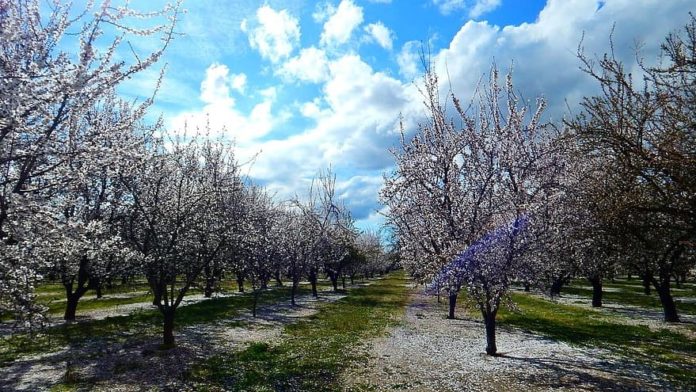In the agricultural world, success can be made or broken by the whims of nature, and accurately forecasting conditions is big business.
Some swear by old methods like those forecast by the Farmer’s Almanac, but the weather remains enormously difficult to predict, and that’s where cutting-edge science comes in.
Semios is a Vancouver-based company whose technology helps farmers to remotely monitor and manage their crops.
Their client base focuses on those growing crops like grapes, almonds, and tree fruit. These high-value crops need to be monitored regularly by teams that scan the farm, but this is inefficient and expensive for growers.
Making decisions in real-time
Unlike predictions printed far ahead of time in the Almanac, Semios’s technology uses local real-time measurements on client farms. It helps farmers make smart decisions by monitoring climate and weather on a hyper-local scale. Sensors also look for signs of pests or diseases in their crops as they emerge.
Weather-wise, the farmer can receive frost warnings, see local and regional weather forecasts, check humidity readings, and watch for frost inversions.
Inversions are a meteorological phenomenon where the air close to the ground is colder than the air aloft. Crops can be hit by frost which majorly impacts their value, so knowing when and where to respond is vital.
Simply put, the client has eyes on the many nooks and crannies of their farm and can take rapid action to protect and increase crop value.
One of the company’s competitive edges, according to CEO Michael Gilbert, is their dedicated team of in-field staff. Nearly half of Semios’s total staff are field technicians, a portion of whom are ready to respond when things go wrong with the onsite units.
“It’s in-field technology, so it’s going to break. We can respond to a down system or unit in one or two days,” said Gilbert to PrecisionAg.
The other portion of in-field staff work with customers to maximize the potential of the system in relation to the crops they grow and the scale of the operation.
Savings on labour and a reduced environmental impact
In an industry where labour is scarce and expensive, a system like this could be invaluable.
Costly monitoring teams need to be brought in around every 12-14 days to scan the many acres of farmland, according to Gilbert. With a remote monitoring system, this can be done daily, immediately alerting the grower if there’s an issue rather than waiting two weeks to get a team in.
Another major win concerns the environment. Instead of spraying an entire almond orchard with pesticide on a bi-weekly basis, clients can target localized areas in need. They may also use pheromones which disrupt mating as a non-lethal alternative.
The company claims to have over a million sensors in operation and to have doubled their revenue year-over-year since 2015. They also announced a $99 million investment earlier this year in their latest round of fundraising.
Automated farming tools like Semios’s could help to drive a cleaner, more sustainable version of agriculture which may be essential going forward.
“With populations growing so fast, the agriculture industry is under tremendous pressure to produce more food which is taxing on the environment,” said Gilbert to Export Development Canada.
“We need to use more data to make better decisions,” he concludes.








































